Our Landscape Plan Revisited — Questions Answered
A couple of days ago, I shared the landscape plan that we had done by a local landscape designer. If you missed that, you can see way more details in this post. But here’s the overview of the whole plan…
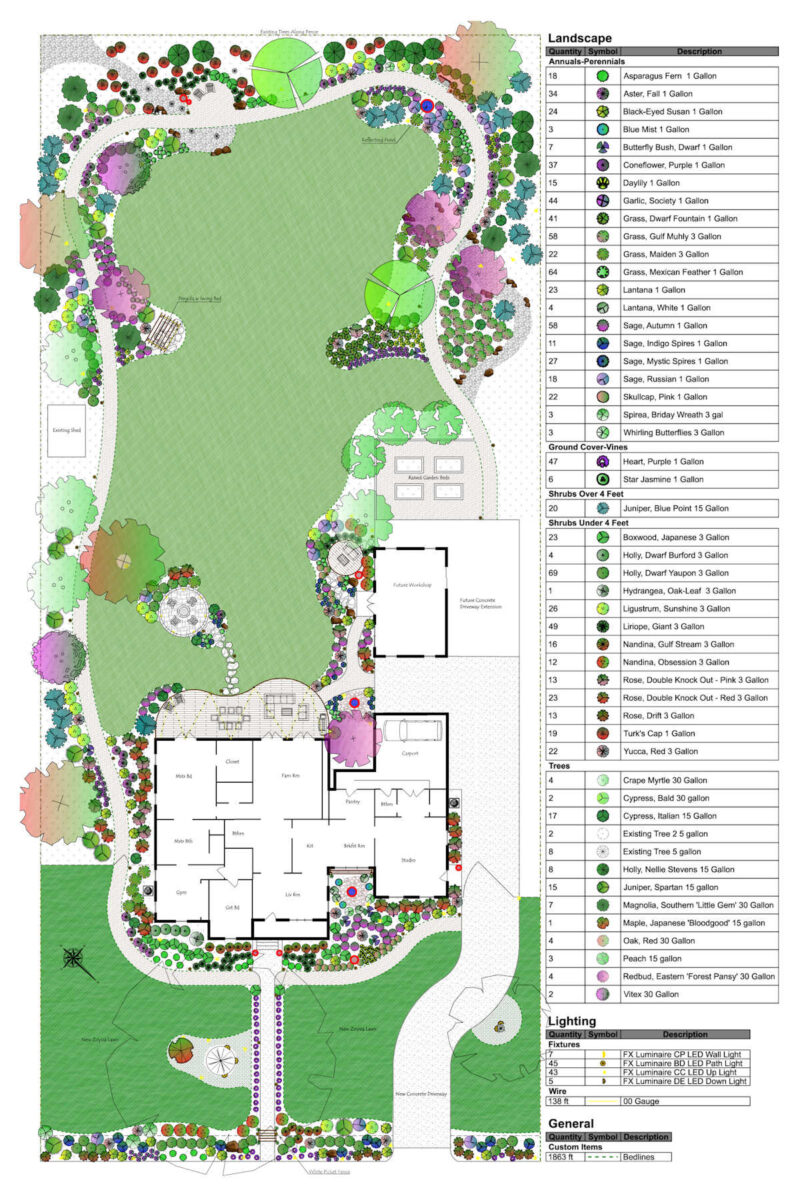
It’s a very detailed plan, and there’s a whole lot going on! A lot of you wondered if I realized how much it was going to cost, or how much time would need to be invested in installing and maintaining such a landscape.
So here are my thoughts…
The Time Commitment
I’m not sure if I made it clear in the original post, but this is a multi-year plan. I know there are others who jump in with both feet, hire out a whole bunch of stuff, and get it done quickly.
For example, I’ve been checking on the progress of Chris & Julia’s backyard transformation every single day (she shares updates regularly in their Instagram stories) as they add a pool, hardscaping, outdoor kitchen, and gorgeous landscaping. From what I can tell, they hired out most (if not all) of that work to the pros, so everything has come together very relatively quickly. And they also shared the budget breakdown of the entire project. If my memory serves me correctly, that number was somewhere in the $140,000 range. (If you’ve been following their progress, and I got that number wrong, please let me know!)
That process works for them. They have young children, and they wanted to get that done as quickly as possible so that they could start enjoying their entire back yard area as a family this summer.
While I have thoroughly enjoyed watching their back yard come together, my process is going to look very different. We’re clearly not in any hurry to get the back yard finished. After all, we’ve already been here nine years, and have done literally nothing to our back yard. 😀
But also, we’re not adding a swimming pool (at least that’s not in the plans right now) or anything else like that that we’re anxious to install ASAP so that we can start enjoying it this summer or next summer. But I do eventually want to be able to go outside into our back yard and enjoy the view. I’d also love for our house to be a place that we can offer to our church as a place to host groups. If the college group at our church needs a place to meet and have a cookout or something like that, I’d love for our house to be available. And right now, our back yard is definitely not a place where people would want to gather. 😀
So in reality, I’m looking at this whole landscaping project as being a 5-10 year plan, and at the rate I do things lately, I’m thinking it will definitely be closer to the 10 year end of that spectrum. That doesn’t mean it’ll be 10 years before we can enjoy the back yard, but it might take that long before it looks anything like the design that was done for us.
I also really want to get my own hands dirty. Y’all know that I’m a DIYer at heart, and I like to hire out as little as possible. I’ve never really gotten into gardening, but I’ve never really had the opportunity. We did a little bit of landscaping at our first house in Oregon, and I thoroughly enjoyed it. But at that time, we really didn’t have money to spend on landscaping. So I did the little bit we could afford, and loved it.
After we moved to Waco, we lived in a rental, and then in the tiny condo for seven years. I did build some elevated garden beds at the condo and put them in the courtyard. We really enjoyed having those little veggie gardens, but we just didn’t have much space.
And now with this house, I’ve spent the last years focusing mostly on the actual house. But eventually, those project are going to start to wane. I mean, you can only do so much remodeling and redecorating on a house before it’s really all finished. So as the house projects start to wane, I’m wanting the outdoor projects to start increasing. Eventually, I envision the house projects will be nothing more than maintenance and a small project here and there, while most of my time can be spent outdoors, digging, planting, building, and maintaining.
And if I need help, we can always hire someone. Right now, we have guys who take care of our yard once every two weeks. I’ve already talked to the owner of that company, and he says they can help me with whatever landscaping and maintenance projects I need done. So that’s always an option if I start to feel in over my head.
The Budget
To answer the most asked question, yes, I realize that landscaping design is going to cost a fortune. 😀
When the landscape designer asked me what kind of budget we were looking at, the first number that came to mind was $50,000. But then I had to think about it. Our plan includes a new workshop for me, a deck off of the back of the house (a part of the house that hasn’t even been built yet), a walking track, and a new driveway. So obviously, what I was considering a “landscaping budget” wouldn’t even include all of those things. Those would be separate.
So in the end, I explained to him (and will explain to you) that I plan to treat this landscaping project the same way I have treated (and will continue to treat) our house.
That is to say that I don’t have a budget.
I’ve never started a room remodel in our house with a budget. I know that sounds strange to some, and it’s probably not how most homeowners tackle projects. But my strategy has been a bit different. I come at these projects from a different angle rather than starting with the budget.
The way I tackle projects is more with this mindset. I’m going to DIY as much as I can so that I can save as much money as I can. At the same time, if there’s something I truly want and it’s a splurge, and Matt and I agree on it, then I’ll buy it. If that means that the project takes longer to complete, I’m fine with that just as long as I’m pleased with the final result.
After all, when we bought this house, we agreed that it would be our forever home. We have absolutely no intention of ever selling it, so we’re not worried about over improving it and not being able to recoup that money on resale. All we’re concerned about is turning this house and this property into what we want it to be.
So that’s the exact mindset I’m applying to our landscape design as well. I’ll DIY as much as I can, hire out what I can’t do, splurge if it’s something I really want and can’t find a cheaper option, take as long as it needs to take, in order to end up with exactly what I want. Because we’re never leaving. 😀
Tackling the house and the landscaping this way helps to take the pressure off. It’s not like I only have five years to finish everything so that we can get the house on the market. Nope. I literally have the rest of my life to tinker around in my yard.
So those were the two main concerns/questions I wanted to address. As to your other suggestion…THANK YOU! I love the idea of buying smaller trees ASAP to save money, and getting them in the ground now so that they can start growing. I also really appreciate the input regarding some of the plants that were on the list, especially the warning about the one (the name of which I can’t remember right now, but I will make a note of it before plant shopping) that is poisonous to dogs. I definitely don’t want anything like that around Cooper. And all of your other suggestions were great and very much appreciated! I plan to go back through those comments and make some very detailed notes to keep on hand when I start purchasing plants.
I’m anxious to get started, but it’s going to be a very long journey! 🙂
Addicted 2 Decorating is where I share my DIY and decorating journey as I remodel and decorate the 1948 fixer upper that my husband, Matt, and I bought in 2013. Matt has M.S. and is unable to do physical work, so I do the majority of the work on the house by myself. You can learn more about me here.


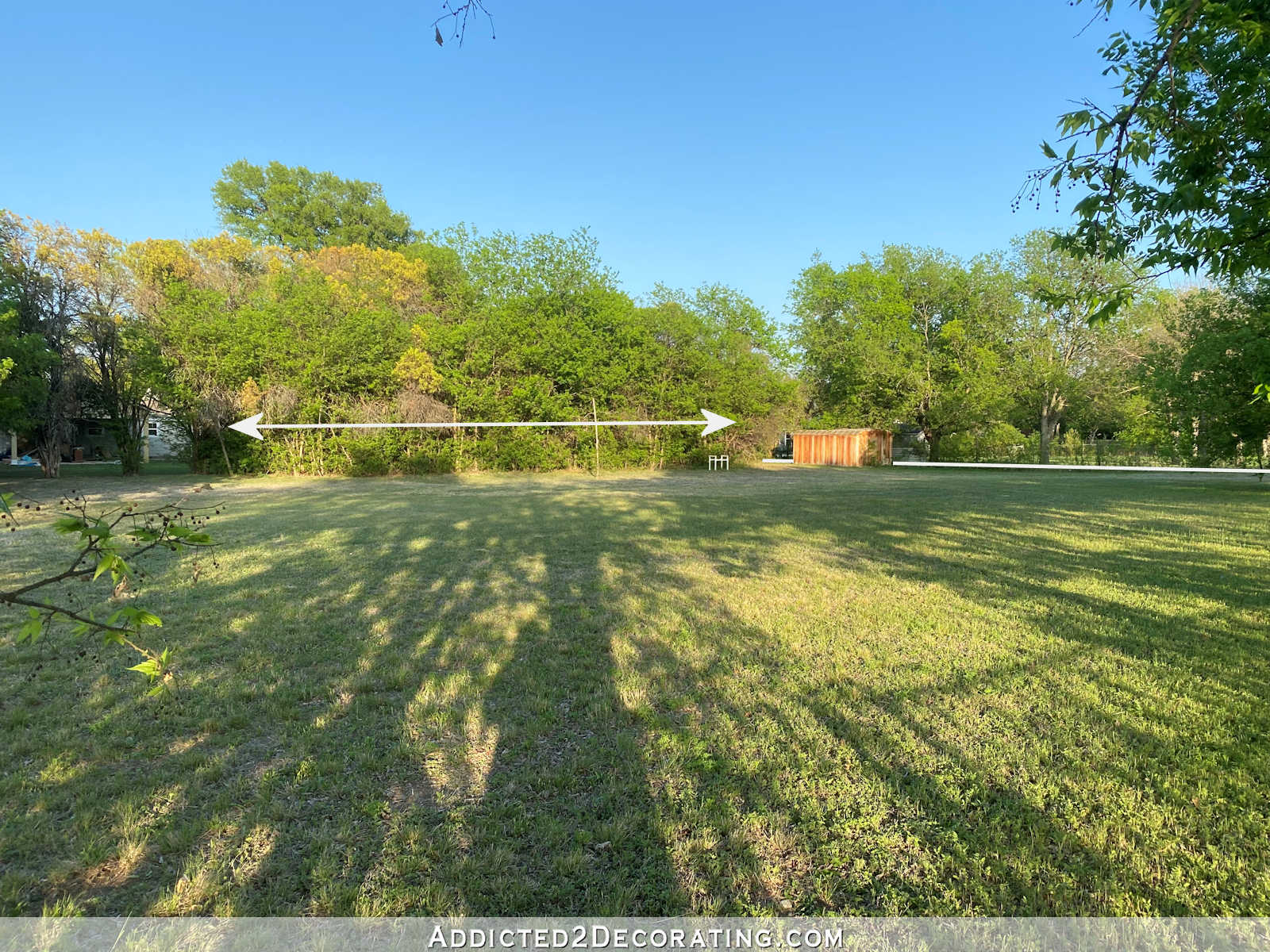
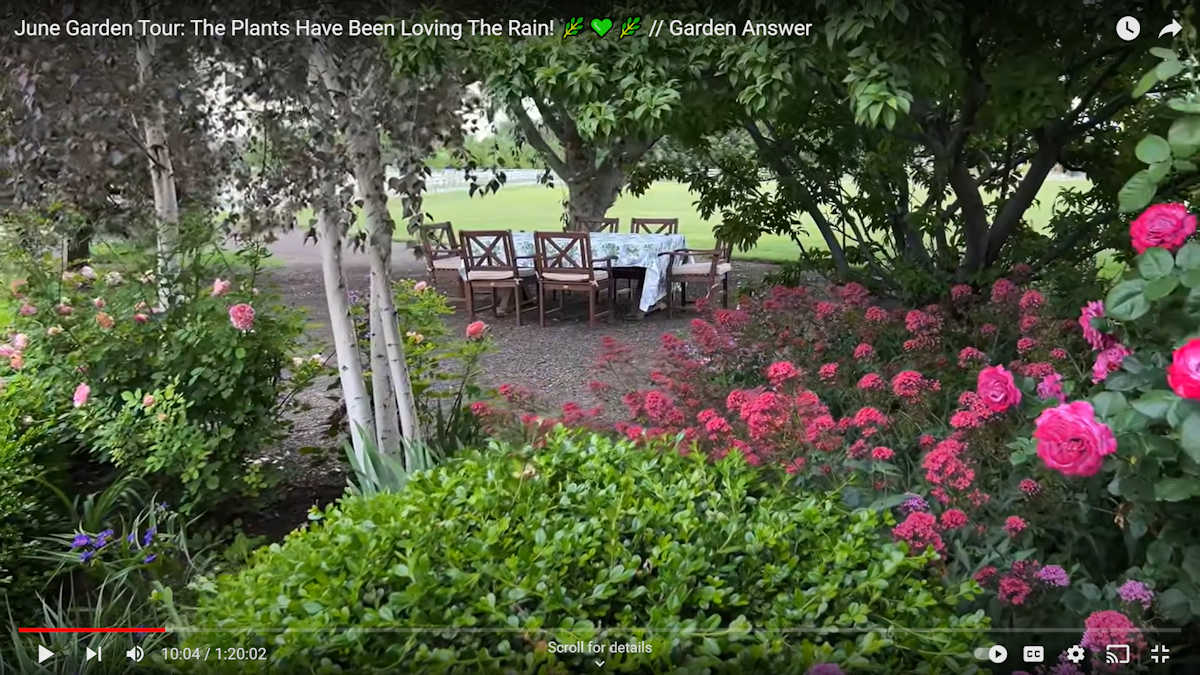
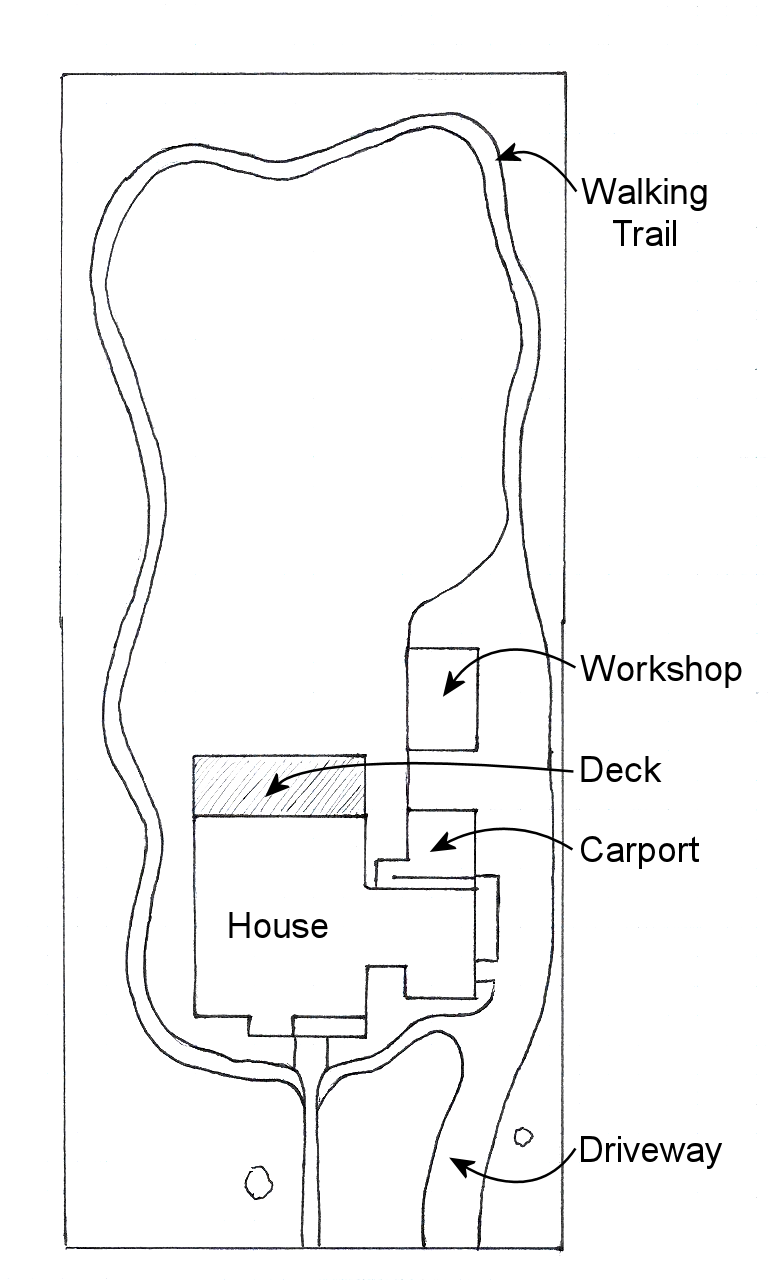
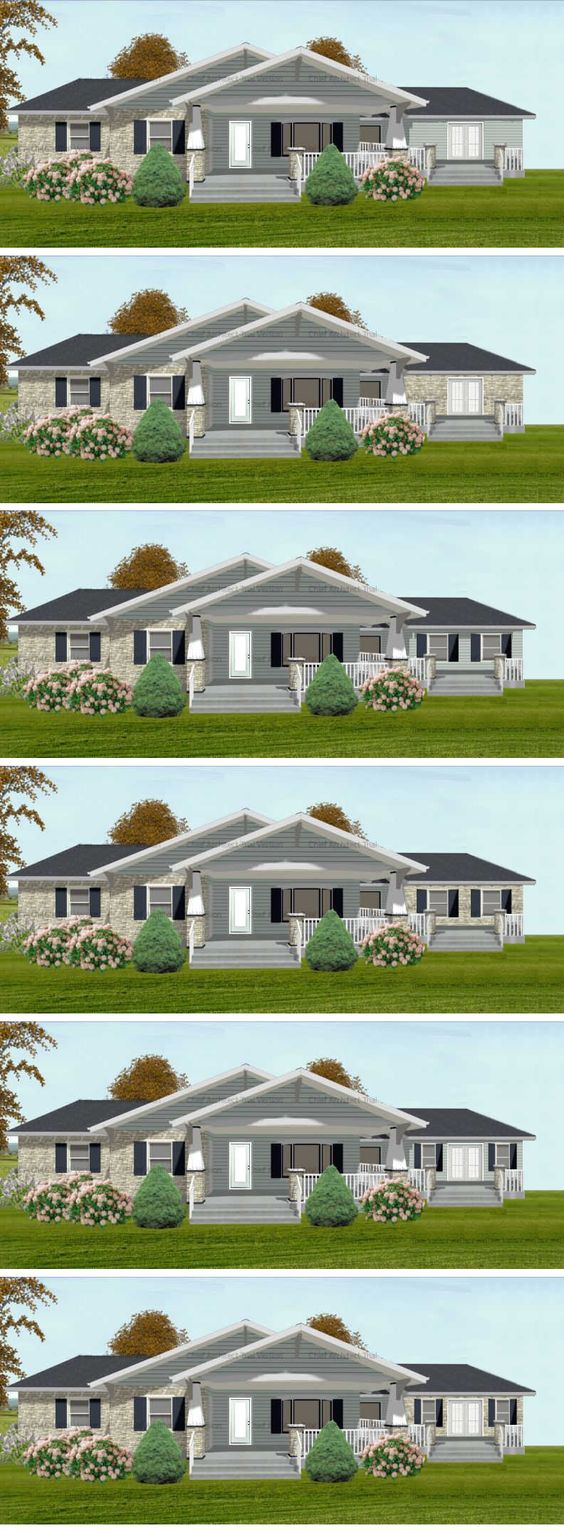
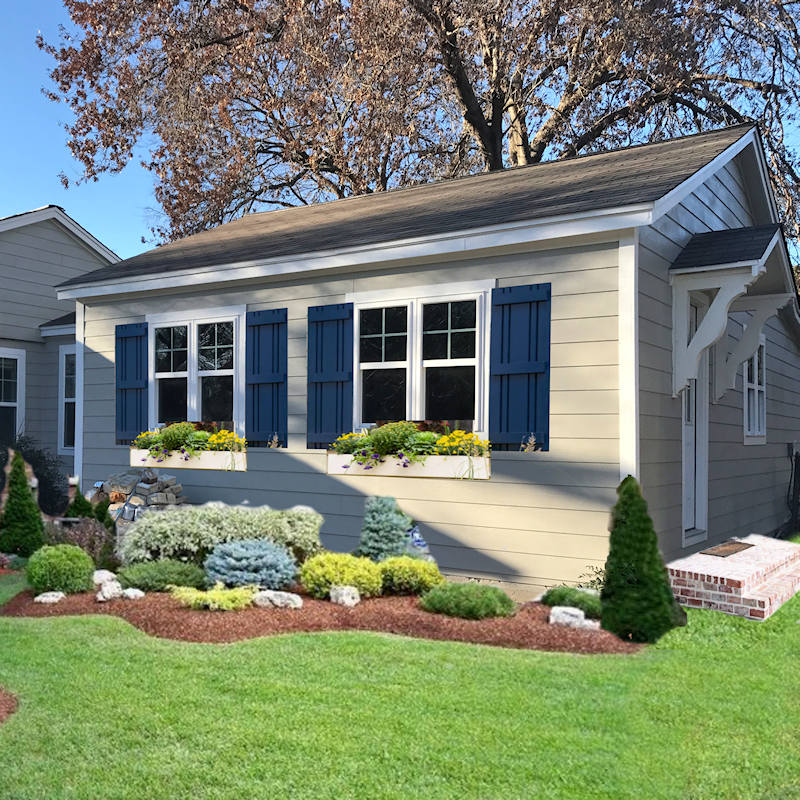
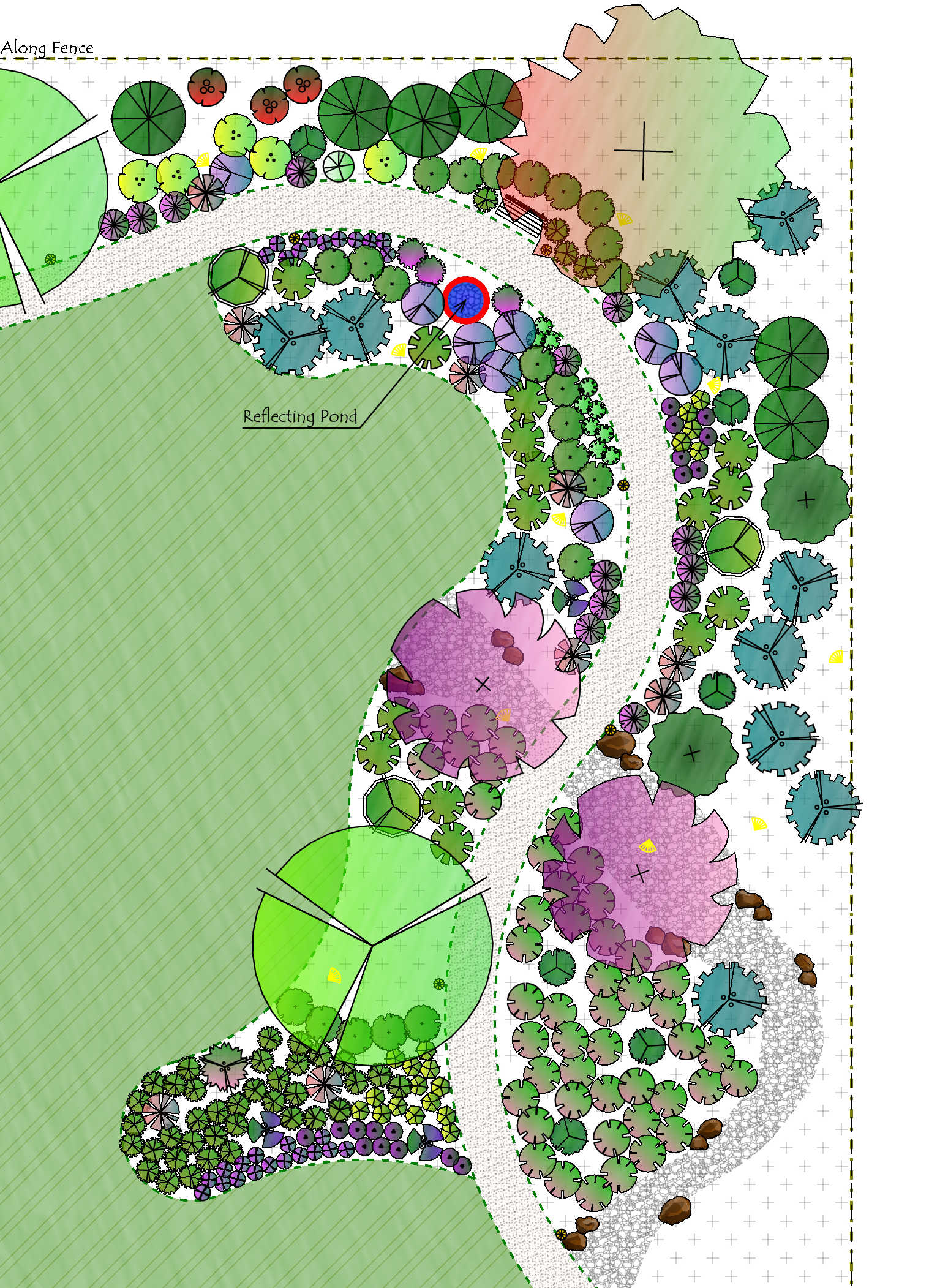
Love your attitude. I am hoping the first bit will be the water feature from the “courtyard” created by your house. Am I right?
Most definitely! 😀 I’m so anxious to get that area done. Or at least start on it.
My friend’s mom spent lots of time both in her vegetable garden and in her flower garden. Fast forward many years and my friend has many beautiful flowers this summer and a fairly big fruit and vegetable garden. One of the things that she does all year long is she stalks the garden areas in Lowe’s and sometimes Walmart. She has purchased many plants at half price or less and taken them home to plant.
If she loses one of those plants it is not as hard on her pocketbook because she did not pay full price for it. She also visits the independent nurseries to see what they may have on sale. So once you know what you are looking for you can just start looking for those plants on sale and start filling in the spaces you have picked for them. I think a landscape is never done because you might move plants or find a better plant for a certain spot. You will be going about it the right way and after five years into it you will be amazed at how much you have accomplished.
Slow and steady will make you happier and pleased with your future yard.
THIS! I also stalk the Clearance racks at the local Lowes and Southern States. I’ve gotten some great plants for cheap that way, even if they needed some babying to revive them. I recently bought a whole flat of Salvia Blue Obsession for $0.50 per plant, which is a STEAL. They looked really bad but they are all alive and recovering in my gardens.
Clearance plants may look sad but they make lovely garden additions. Often they are simply rootbound in the pot and dying to get in the ground.
good idea to scour the clearance aisles! plus many plants are easy to propagate!
case in point liriope: rather than buying multiples, get one medium sized plant, split it, and let those two plants develop. the next year, you’ll have enough for 2 more, then 4 more… it’s exponential!
all the grasses and i’m sure plenty of others are the same!
For a little more than the cost of a medium plant, you may be able to find a flat of “plugs” – these are small but you can plant a whole area at once and then as they grow they will be about the same size. A good nursery (not Lowes or HomeDepot) will have flats. A local nursery in VA sells 18-cell flats for $42 which works out to about $2.30 per plant. I’m sure there is one near you that has something similar. 🙂
I was looking at the previous post and one thing I noted that will also help on the budget end of things is that some of these plants take very well to being split. For example, the day lilies if properly fertilized and given access to adequate water, will double in size every 2-3 years, so if you’re going to take up to 10 years to do this, you can take advantage of that. The same goes for all the large grasses. I have a grass that very urgently needs to be downsized and it’s so thick in the roots that I didn’t know how to get through it. I read somewhere you can take a saws-all to it. 🙂
You may also find that friends and neighbors wouldn’t mind splitting their perennials and giving them to you or doing a swap.
note to self, read all comments before adding my own. i just replied basically the same thing on a comment above. great minds, justin!
(the irony is that i have a black thumb when it comes to plants and gardening)
Are you going to be able to do much work right now? Considering that it’s so hot outside?
I have a tiny garden in comparison to your backyard, but there is one thing I can assure you: If you start planting some plants in the near future and just let them grow (just like you plan with the trees, which is a fabulous idea!) you will provide yourself with more plants to put in other corners of your beautiful huge space. I have already given so many plants away as presents as there is not enough space for all the “babies” to stay here (I like some variety 🙂 ) , so you can actually become your own nursery. And it doesn’t necessarily mean to spend too much time on this project right now, either: Just start in one corner with some plants of which you know that they are eventually going in other places, too. And in two or three years, you can supply yourself with those additional plants.
I am much looking forward to this aspect of your blog! I am always fascinated by the stuff you make and have learned so much from you in recent years; this time the topic is something I know a little bit about myself, so might provide some input for a change.
I like the attitude too, and that’s what I expected you were thinking! 🙂
I’m glad you like the idea about the trees (comes from experience, we had to replace some very tall bushes for our neighbour), which reminds me this (that I forgot to write last time): Remember that plants are alive, and will be growing and producing more plants in time. So by planting small patches over a long time, you can end up getting free plants now and then, to plant into areas further away – especially since the entire plan is made of mix-and-match areas that contain many types of plants. And you would still be getting a cohesive end result, because everything is pre-planned. I think that this landscape designer will end up making up his money many times over!
Lastly, as you are trying to protect the doggo from plants, remember to protect young plants from doggo as well, a hyperactive dog could dig them out… Looking forward to seeing the water feature! (Did the landscape designer give you any info about that persistent bush there?)
Kristi, I am sure the landscaping will be as well done as has every project you have taken on. I like your approach. It seems a nice transition of working on inside renovations to outside landscaping. You will always need something to create and keep you busy. This is it!
Great response! Your initial posting got a lot of information that while largely true, was a bit intense in the response. Yards/gardens evolve based on so many factors. You will learn as you go. You’re right – the big house projects will one day cease and you will turn your attention to the outdoors. I know you plan that to be your forever home, but I guarantee that for those that know your work, it would sell faster than the “Magnolia’d” homes.
I’m sure you’re aware of this, but as a Texas gardener of the past 40 years, I would recommend against planting anything now. Perennials go in in the Fall.
In this climate, I am completely thinking even my native and well-adapted gardens.
As I’ve ventured more into gardening, I’ve found my local county garden group on Facebook to be an amazing resource. While social media can be toxic in many ways, this one group is solidly helpful, kind, and uplifting! We share advice, jokes, and most of all–plants! Someone is often splitting lillies, giving away extra seedlings, or trying to find a home for their 100 spider plant babies! If you have some garden groups in your area online, I’d suggest joining a few to find one with kindhearted gardeners–they’re a treasure.
Perfect to have a long term plan. Start with the bones of the garden – trees, buildings, walks, fire rings. Then add bushes, perennials and finally annuals. Do what you can each year. Love your plan. You might consider some kind of screened in porch – wonderful to sit outside without flying critters.
It’s actually good that you haven’t done much with your yard yet. Thirty years in my house and because we didn’t start with a master plan, did major projects slowly over the years means I really don’t have a fully lush landscape which really disappoints me . Hardscape is so expensive and takes up most of the budget, that I have to plant starter plants. Your house addition will cost the most , if you can include the deck & your workspace, & get the larger to be trees planted first.
When you start planting, you might want to consider planting in the fall. We added several beds during COVID-19 that fall and most of the stuff survived the freeze last year. I planted a few things last fall to replace some we lost because of the freeze, and they are doing well. I added a few more this spring, and they are all struggling. (All of my plants are native and/or drought tolerant). The current water restrictions (can only water 2x week) are making it hard to keep them alive, and if we go to phase 3 (can only water 1x week), I’m not sure they will make it. These are all salvias, so they usually do well once established. They just didn’t have enough time to get established this year before the current drought hit us.
You might also want to consider whether you really want to do your whole yard – I just have 4 flower beds to water, and they are all fairly close together, and it still takes a long time to get the sprinkler set up, water them for a while, move the sprinkler, water, move the sprinkler, water, and move the sprinkler and water yet again. It’s hard to fit all the watering they need in since I can only water before 6 am and after 7 pm with the current restrictions. And that’s just my flower beds – I don’t try to water the lawn.
I don’t want to discourage you – your plan is gorgeous! Just wanted to share my current experience as someone who lives near you and is a relatively seasoned gardener. If I lose any of my plants this year (which is likely) I’m probably not going to replace them. Between the extreme droughts and the crazy cold winters it’s hard to keep stuff alive and the constant time and $$$ involved is getting old.
You might want to consider adding a drip system — it’s more water-efficient because there is less evaporation loss, and it remains in place so there’s no weekly set-up required. You can get a splitter for you outdoor faucet, so installation is fairly simple.
I believe the ASPCA maintains list of plants that are safe and those that are toxic to pets. You can check them out. Cats are fairly good about staying away from toxic plants but dogs seems to be a bit more clueless especially around deadly things like sago palm seeds.
Thank you for the link to Chris Loves Julia! More house porn for me! LOL
The plant than can be poisonous for dogs is Nandina. It is listed as a Dirty Dozen plant as it can be invasive, though the ones your landscape architect put in your plan are sterile. They do still spread via rhizomes underground and are almost impossible to eradicate. I gave you a link for more information in a comment on the first post. Here it is again: https://www.lewisginter.org/nandina/
I don’t blame for making your landscaping plan a long term goal over time. Getting the trees in as soon as possible and buying smaller to start is the perfect approach.
I SO loved your explanation, and it all makes such sense! I kind of knew this was a project of not immediate concern, but something so you would have it on paper, and look forward to chipping away whenever YOU wanted to. It is SO lovely, and I know someday you will be happy to spend lots of time outside with Matt. For sure people gave you great input last time, and I see some great ideas this time too. Your project is giving all of us great ideas for the future of our own yards. We hope to downsize, and I am hoping I never have to have grass in Florida again….well maybe a little for the dogs…BUT I hate it, and I’m planning grasses and other plants that I like, with landscape materials to do away with huge areas of horrible Florida turf. I noticed some of what is recommended for you is also good for my area. I’ve been researching too. We will all watch for the next ten years, I am SURE! Enjoy the journey! That’s what it’s all about.
Sprinkler systems! Just about everyone in Northern Australia has one. They drip water large trees and sprinkle flower beds and plants during the cool of the evening or night, so water can soak in before evaporating. Absolutely essential for minimising water usage. And absolutely essential that they be designed and installed before planting done – definitely before mulching is done!
Great plan and pretty much what I assumed you were doing! My one tip is to start the flower bed installations near your house and work outward/away from there (apart from getting the trees in). Your proximity to them will mean maximum appreciation and maximum care made easy. We bought two acres five years ago and I started gardening bits all over the place – took me a few years to realize it was hard to get random small spots established, a lot of walking with watering equipment, and I hardly was near them to get any pleasure from them anyway.
Yes, get trees in asap so they can grow! Hardscapes should be the first big project, as it would be hard to do after planting! Gardens are no different than any other project – they never end and are always changing! Have fun with it!
Chris loves Julia’s pool alone cost $140,000. Their plant budget, including installation of the plants, was $25,000. When it came time to install the plants, the actual cost for plants was going to be $75,000. They bought smaller, younger plants, fewer plants and less expensive plants to come closer to their budget. I don’t remember the budget for the entire backyard including hardscape.
Eileen
When we moved to our home 25 years ago, there was no landscaping. We had a (native plant) nursery landscaper draw up a plan for our home like you did. I found the native plant groups great for finding plants that grow well in our area, sharing their plants, & letting me know when there are pop up sales . With our hot summers & drought conditions, using native plants has proven to be a good decision, & they need minimal watering to survive. My biggest regret is not putting in a sprinkler system though for the foundation shrubs. I have also found having two very large pots 24″ diameter for annuals, do not need daily watering & have great visual impact for annuals that have full season flowers. Here are native plant & master gardner links in central Texas.
Texas Master Gardner program
https://txmg.org
https://www.texaslandcan.org
https://npsot.org/wp/resources/finding-natives/
Diane has some great suggestions here. I live in the MW so conditions are different here, yet in my experience too, I have found natives need minimal watering. Just be sure to site them properly! Facebook Marketplace, Craigslist, gardening groups and fellow gardeners are great ways to get plants for cheap or even free. Also watch for sales. Plants will also fill in spaces over time, creating more plants you can use.
I understand about projects, too. The large rain/prairie garden I’m creating with a neighbor’s help is going to be a summer long project. I found the shrubs at a nursery doing a native plants sale, and he has many extra plants to share with me from his rain garden. I also got some plants from a spring natives plant sale.
Lantana and Nandina seem invasive to TX. Also, there are many native shrubs you might want to consider too, like Leadplant, Red Chokeberry or American Beautyberry, Inkberry (a holly), Rose Mallow (like Hibiscus), St. John’s Wort or Virgina Sweetspire.
The Ladybird Johnson Wildflower Center has a searchable database you can customize.
Here are the links to Texas Invasives and the Ladybird Johnson Wildflower Center:
https://www.texasinvasives.org/plant_database/cn_results.php
https://www.wildflower.org/plants/
First time posting – many years lurking 🙂 But gardens are right up my alley! BTW I’m a native Oregonian transplanted in NC.
Looking to it being a 10-20 year project is the CORRECT mindset. Gardens aren’t created overnight even if you have hired help to ‘do it all at once”.
My 1st (and most important suggestion) is to learn and understand the proper way to plant… Root washing is an INVALUABLE lesson that will help you achieve success in the following years (likely not something your local landscape installer person will do as it is time consuming – would rather plunk it in and walk away)…
My 2nd advice is to concentrate on planting the slower growing items(trees etc.) as soon as you are able as they do take time to mature.
3rd advice, buy a few of the plants you want multiples in your landscape and plant now… as time goes on you can divide and replant – will help a lot with your budgeting!
But most importantly HAVE FUN! Your gardens will be a lifelong journey… There will be ups and downs, but no different than what you encounter with your interior designs… Sometimes a plan works, sometimes it needs a bit of tweaking… but eventually it all comes together perfectly !
Connie, great advice! I have never heard of “root washing.” Now, I’m going to do that going forward.
I was wondering: how much did the plans from the original landscape designer cost? Obviously they put in a lot of time & effort planning it out with different plants etc: so how much was the initial spend? And also: do they have to visit the site in person to do your plans??? I’m in NC and in my town we don’t even have any local landscape designers at all!
The plan was $1550. He charges $100/hour, and he did come out walk the whole yard, front and back, take notes as I described what I envisioned (and what I know I don’t like), and take measurements of everything so that he could put the measurements into his program that he uses to do the layout. I provided the floor plan for the actual house, with measurements. I also provided a Pinterest board that I had made with ideas of things I like. From there, he got to work, and altogether, spent 15.5 hours creating our plan.
If you don’t have anyone who can help you locally, there are online places that can do a landscape design for you. You’ll miss out on the advantage of having them see the site in person, and since they won’t be local, they may not fully understand your climate and what plants work well in your precise area. But it might be worth it just to get a general idea put together. The two places I’ve seen advertised are YardZen and Shrub Hub. I think if you google those names, you’ll find them.
Very beautiful plan. Don’t worry about trying to plant anything in this heat, tho. Wait till fall and look for much smaller sizes, than his plan calls for. He gave you what would be instant finished garden almost. Very expensive to do it that way. Nearly all the plants can be found in much smaller sizes., and you can grow them out, split them and fill up your spaces. Your hard wood trees would be better larger, and fruit trees, but most of these can start much smaller. You will have a beautiful area, over time!
I forgot to add two sites that will give you a ton of info. thedirtdoctor.com and mikesbackyardnursery.com
Howard Garret, the dirt Dr, is organic and in the DFW area. He has excellent books on Texas plants, and how to plant trees.
Mike is in Ohio, and he has excellent tutorials on propagating, all of the plants in your plan.
Second that: with the trees, plant them in the fall when it cools – don’t try and plant them at the peak of the summer (unless you want to be out there watering them every day to try and keep them alive through the scorching heat!). If you plant them in the fall, you’ll still need to look out for them next summer (give them water if they start to look sad) and maybe for the first few years until they get their roots deep enough to withstand the summers on their own.
Try to do building projects (paths, benches, etc) in the summer, planning (what you’re going to buy/plant) in the winter, planting trees and shrubs in the fall, and planting flowers and vegetables in the spring. Have fun!
Chiming in about trees: I have now lived in two houses with zero landscaping before we moved in. Trees grow slowly, so if you put in some small trees now, they will have some time to grow BEFORE you do the landscape beds with plants. Someone told me of an old saying that “the best time to plant a tree is 10-20 years ago. The second best time is today.” Fall planting is prefered for trees, as it less stressful for them. And be prepared to water a lot at first. I would recommend paying a professional to plant your chosen and smaller trees; they will give best advice to schedule your planting and watering. In my experience with trees (we live in a different zone than you), it really takes about 3 years before you start to see some real growth.
I like your mindset! Well thought out, well stated.
She who plants a garden believes in the future. I’m paraphrasing and I don’t know who said it, but it sure fits. Your plan is perfect as gardening is a lifelong project. Its going to be wonderful beyond imagining.
Final suggestion (after my previousious comment) : do the hard outside stuff in the early spring, fall, and maybe winter. Do the inside projects in the heat of summer. I know Waco, your body will thank you! Have a great garden and a great time growing it!
I came across these while looking for something for my own project. When I opened the simplified install prices document, it says they are ADA compliant – I thought they would be great to make the pathway and lawn areas really accessible for Matt. This is for grass areas, but there is another product to stabilize pathways, and another for preventing pets from digging up areas.
https://shop.coregravel.ca/products/grass-park-31-5-sq-ft-pack-free-shipping